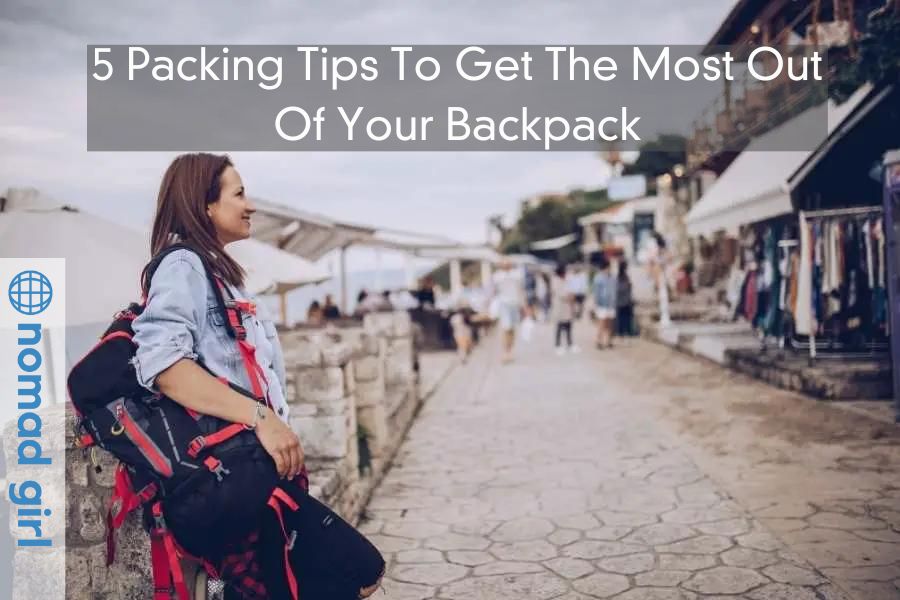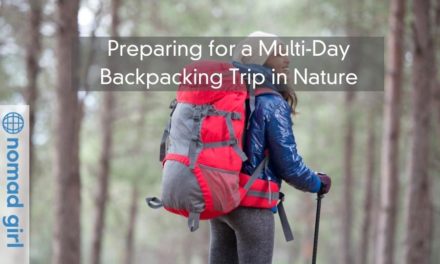Many people consider packing to be a nightmare but organising your bag for long-term travel is a whole other realm of packing frustration.
It is already so difficult to pack for even just a two week holiday but imagine packing for a six-month trip or longer. And when you factor in the varying seasons and locations, you realise just how much you actually need to bring.
I am a serial over-packer and always bring more than I need. To counteract this (because I simply cannot leave anything behind), I have to make sure I am making the most out of the limited space in my backpack.
I think that in order to minimise the inevitable stress of any trip, a well-stocked and organised backpack is the way to go. And this organisational requirement is only amplified if you are about to jet-set off on a long-term trip.
So, where can we draw the line between functionality and actually being able to lift or close your own luggage?
I’m afraid I am not sure that I have cracked it yet, but I will say that there are a bunch of items that have made my life a lot easier when packing for long-term travel and they ensure that I am maximising on every inch of my space.
1. A Travel pack
Buying a backpack for travel is not about picking the cheapest option with the best reviews. There is actually a lot to consider.
When it comes to travelling, there is a certain type of backpack you simply must buy. And this is the sort of backpack that has a zip that goes vertically down its body, also known as a travel pack.
These bags are essential because it allows you to lay the bag down and open it like a suitcase. Trust me, this is so much easier than having a duffel-style bag in which you literally have to unpack everything to get to the bottom.
Travel packs come in varying styles but most popular for backpackers tend to be the ones that have a smaller day-pack that can be detached from the front. This allows you to have an extra bag for day trips or simply just some extra space.
Make sure to go into a store and seek assistance from someone who knows how backpacks work. Even do this if you plan to actually buy your pack online.
There is a lot to think about including whether your backpack has been designed for males or females, the position of the backpack on your back that will be the safest and most comfortable for you as well as whether your pack is too long or short for your body type. You should also check to make sure all of the excess straps fit around your body.
Consider how many litres you are willing to carry and what will be safe for you as well as the style of your pack that will best suit your travels.

2. Packing cubes
When I decided to travel long-term I simply know that I had to invest in packing cubes.
Packing cubes are sets of zip-up bags that can be used to separate your clothing and different items in your backpack. For example, you could have a pack for your underwear, your light clothes, your warm clothes and everything in between.
Not only do packing cubes save you time while you are travelling but they also allow you to fit more in. They make life easier and more efficient when you are constantly on the go.
Instead of having to unpack and repack everything every time you stop somewhere, you can instead keep everything neat in their cubes. There has been many times that I have watched travellers despair over their backpacks and having to repack it every time they go somewhere new. Packing cubes completely eliminate that issue.
I can unpack my cubes in each location and discard my actual backpack for the duration of my stay making everything easier for me. The key to getting the most out of your packing cubes is to roll all your items up neatly rather than folding. Lay them side by side rather than on top of each other and this will dramatically increase the amount of space you have.
Cubes can be found in adventure stories or very easily online and they are extremely cost-effective.

3. Padlocks
For peace of mind while you travel bring a couple of sturdy and durable padlocks.
One of my most prominent memories from early backpacking trips was the fear of dumping my backpack at a hostel reception until my room was ready. Can’t people just open my backpack and grab stuff? I mean it didn’t happen, but it certainly could happen.
Also with most hostels using lockers for storage of valuable in the dorm, not having a padlock was simply a non-option.
A padlock may not be fool-proof but it certainly reassures me when I am out and about.
When using a padlock to lock up your backpack, make sure to push the padlock inside the bag when you’re zipping it up in case any pesky thieves think that there must be something of value in it (which there probably is). In hostels, simply be diligent with locking up your locker every time you leave the room even if just for a few minutes. You never know in a hostel dorm who you could be staying with (but in most cases everyone is lovely).

4. Elastic bands
Inevitable to any trip is the load of cables you find in your case. Whether it’s a charger for your phone, laptop, kindle or the cable of a hairdryer, no amount of organisation can prevent a tangle issue.
Have you ever opened a bag after a long haul flight to find that all of your cables have become intertwined? I think we have all been there at some stage.
When you have carefully packed every square inch of your case, the last thing you need to be stressed over are some cables. Thankfully, this scenario can be easily avoided with some elastic bands.
Simply wrap up your cables individually and secure each one with a band so that they stay separate but also avoid damage. You could also think about using a clear bag for your tech stuff so you can easily locate what you need.

5. Your go-to bag
Have a smaller bag that you keep your most-needed items in that sits separate from your main backpack. This will be your go-to bag.
This can be the detachable backpack from your travel pack or another separate bag or even a foldable backpack. This bag should not be too large as you will need to carry it on your front when your backpack is on your back.
It will house your camera, your passport, your wallet, your sunscreen and it’s just going to become your survival kit on the road. It will come in handy on your travel days and will keep all your important stuff together when in different locations.
This means your backpack can be your little home for your clothes and toiletries. Let your go-to bag do the rest.



















